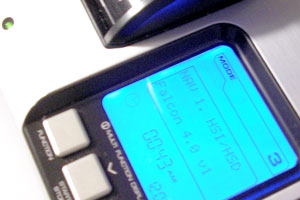
Saitek X52 Review
Programming the Saitek X52

The standard SST software that comes with the X52 is easy to use. It has a nice 3D interface that shows you which button on the stick you pressed and you just assign a key or macro to it. It really is simple. But it's also a little limiting AND time consuming. Trying to organise your controls is difficult, although the X52 does have three modes each of which can have a shifted and unshifted state.
That essentially gives you 6 modes -- that's 6 different keypresses (or macros) which can be emulated by each button. But with flight sims I don't think you can have enough buttons on your stick. Fortunately I found Saitek's beta programming software. This is the real ticket. It allows much more flexibility including the ability to assign other buttons as 'shift' buttons. You forgo the fancy 3D graphics with the interface with the beta software, but it's worth it. Just by introducing one more shift button you can add another 6 modes to your X52. And you can name the modes and even assign button presses to the change in mode itself -- however I found this function a little bugged, but I suspect this is user error.
Basically, forget the software on the disk and go for the beta.
Unfortunately any profiles you've already made with your standard SST software will not be compatable with this beta so you'll have to start all over again, which, in my opinion is a real, major pain in the butt. I'm hoping Siatek will change this because making profiles can be time consuming.
One other function that's been missing from Saitek programming software is the Cycle command which allowed a button to cycle through keypresses. This is still missing both from the standard software and the beta.
As I've said, you'll have to be patient to program the X52. With 12 different modes in my current profile there's about 560-odd commands I can program.That's quite a few. and this is where the infamous clutch button has it's use. The clutch button is used for two things -- as an info button (hold it in and press another button and a description of it's function is displayed on the LCD screen). The other use is to change profiles on the fly. If 500 commands isn't enough, you can set up other profiles with another 500 commands (say one profile for air-to-air and one for air-to-ground) and swap profiles without having to even look at the Saitek profiling software. You can simply swap profiles in game.
 But neither of these things are really as good as they might at first appear. The clutch button doesn't show info on all the hats or sliders, so if you forget what a certain rotary does in a certain mode, you're outa luck. And swapping profiles mid game is a little clumsy. Do-able, but clumsy. This would probably be best suited for games where you can control a variety of vehicles and you set up a profile for each vehicle type.
But neither of these things are really as good as they might at first appear. The clutch button doesn't show info on all the hats or sliders, so if you forget what a certain rotary does in a certain mode, you're outa luck. And swapping profiles mid game is a little clumsy. Do-able, but clumsy. This would probably be best suited for games where you can control a variety of vehicles and you set up a profile for each vehicle type.
However, even with the complexity and key-mashing involved with something like Falcon 4, 500 commands should suffice, especially if you use SHOOT (a free voice recognition software which can be used to free up all the keypresses for voice comms to wingmen, ATC etc).
|
|
|
(c) 2007 IndiVision Studios, All rights reserved.